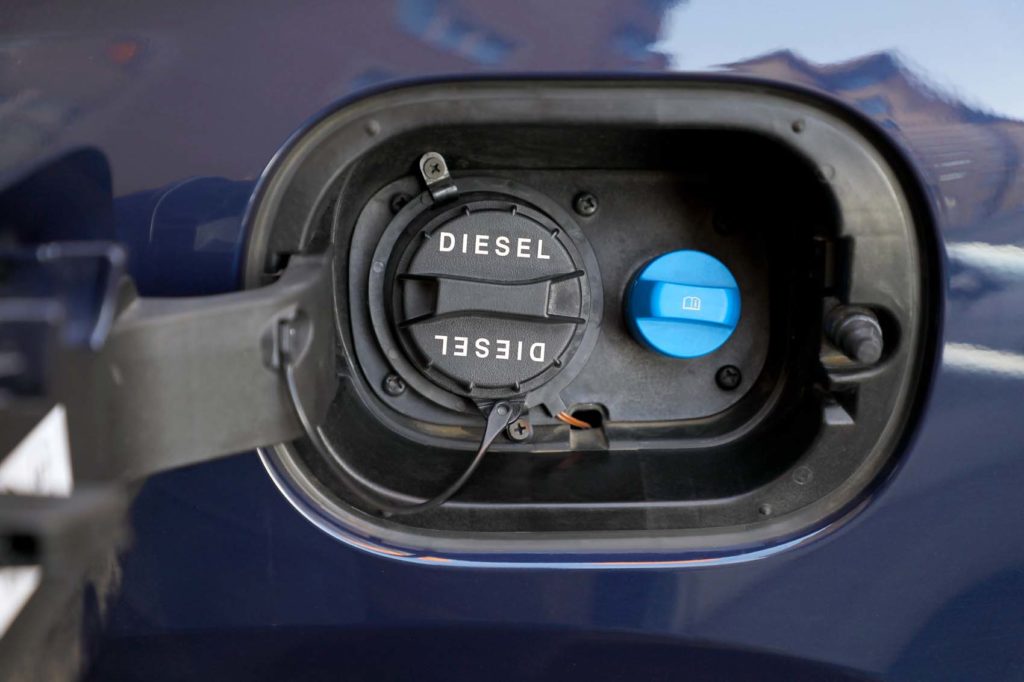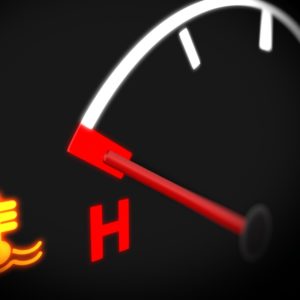You can drive your diesel-powered vehicle with limited tailpipe emissions thanks to diesel exhaust fluid (DEF). Sometimes called diesel emissions fluid, DEF helps break down toxic nitrogen oxide (NOx) in the exhaust gases from the engine. The fluid ensures that tailpipe emissions are cleaner and safer for human health.
The DEF warning light keeps you aware of the amount of diesel exhaust fluid remaining. Read on to learn more about this important warning light and what you should do when it activates.
What Does the DEF Warning Light Indicate?
When the level of diesel exhaust fluid reaches a critical level, your vehicle’s computer will turn on the associated warning light. The DEF light will continue to illuminate until you refill the fluid’s container.

What Triggers the DEF Light?
Low diesel exhaust fluid levels will cause the DEF light to start blinking. In most cases, it reminds you to refill the DEF tank.
However, seepage, faulty connectors, and damage can lead to leaks in the diesel exhaust fluid system. A major leak can deplete the fluid reservoir to critically low levels, triggering the DEF warning light.
In case the DEF light starts blinking but the tank is full, the DEF level sensor or another part that checks diesel exhaust fluid levels might have stopped working properly.
What Happens if You Ignore the DEF Warning Light?
Your vehicle’s computer is programmed to constantly monitor emission levels and make sure they stay within legal and safe levels. It keeps an eye on the diesel emission fluid level and will activate the DEF light when it detects a shortage.
If the amount of DEF drops past a certain point, the computer will put your vehicle in reduced power mode. This keeps the emission levels at a safe and legal level but also cripples your ride’s performance. You may have to call for a tow if you still have a long way to go with no refill at hand.
Eventually, the vehicle may not start until the DEF tank is refilled.
How to Prevent the DEF Warning Light From Illuminating
It’s easy to keep the diesel exhaust fluid warning light dormant. Just keep the DEF tank topped regularly. Make a habit of regularly inspecting the amount of DEF remaining in the container and refill it as needed.
In most pickups, the DEF filler port should be next to the filler opening for diesel fuel. Other diesel-powered vehicles may have it elsewhere. If you cannot find the DEF filler port in your vehicle, check your owner’s manual. Take the time to read up on the DEF refilling process; you don’t want to accidentally pour the wrong fluid into the fuel tank and contaminate your fuel.

Your vehicle’s computer checks the amount of exhaust gases from the engine and injects enough diesel emission fluid to minimize NOx levels. Since the engine produces more gases when it works harder, more DEF is consumed when your vehicle runs at high speeds or tows heavy loads. If you drive a work vehicle, you may need to refill the DEF tank more often.
If you somehow run out of diesel emissions fluid while on the road, you can buy it at the dealership and most car parts stores. You can also top off DEF at most auto repair shops.
A Closer Look at DEF
During an ignition event, combustion chamber temperatures when the engine is under load can surpass 2500° F (1371° C). At these temperatures, the molecules of inert nitrogen forming the majority of the air (78%) is superheated by the uniting of O2 with HC so that oxygen can bond to some of the nitrogen molecules to form oxides of nitrogen (NOx).
An x is used rather than a number attached to NO, because one molecule of N can bond to various different numbers of O molecules. The number isn’t always the same, thus the term “oxides” of nitrogen.

NOx is not our friend, so the EGR system was designed to mostly prevent it from forming in the first place. Even on gas burners, however, a catalytic converter is mounted near the engine to handle the remaining NOx that forms despite EGR.
On modern diesel engines, there is a selective catalyst reduction (SCR) converter that takes care of NOx, but on diesels, a compound called diesel exhaust fluid must be injected for the SCR catalyst on these diesels to work.
This additive is typically called DEF and reacts with the NOx to separate the NOx back into nitrogen and oxygen molecules. This takes place in combination with a selective catalytic reduction catalytic converter.
The NOx is stored in this SCR and a chemical reaction occurs through the injection of DEF by way of a control valve called a “nebulizer,” which is basically an injector of sorts.
Any information provided on this Website is for informational purposes only and is not intended to replace consultation with a professional mechanic. The accuracy and timeliness of the information may change from the time of publication.


















I was informed by several mechanics at my Chevrolet Dealership that idling can cause the def fluid warning light to appear.